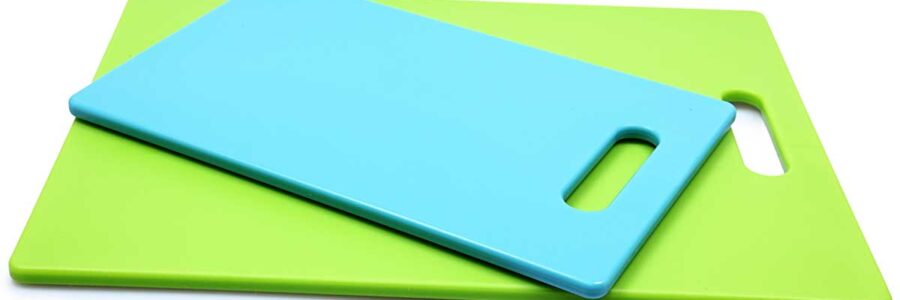In our modern kitchens, where convenience is key, plastic cutting boards have become a common sight due to their durability and ease of cleaning. However, these boards may pose hidden dangers by introducing plastic particles into our food. This article highlights the risks associated with plastic cutting boards. It discusses their impact on health and the environment, emphasizing the need to consider the materials used in food preparation carefully.
What Happens When You Use a Plastic Cutting Board
Plastic cutting boards are known for their durability, but regular use causes wear and tear. Over time, scratches and grooves can form, releasing small plastic particles into our food, often too small to be seen with the naked eye. This risk escalates with the age and condition of the board, potentially making a familiar kitchen tool a source of plastic contamination in our meals.[1]
Health Risks of Plastic in Food
The ingestion of microplastics, defined as plastic particles less than five millimeters in size, has emerged as a significant health concern. When entering our food from cutting boards, these particles can cause various health issues, including hormonal disruptions and digestive problems. The full extent of their long-term effects remains under scientific investigation, but the potential risks are concerning and warrant attention.[2][3]
Environmental Impact
Beyond our kitchens, the environmental impact of plastic cutting boards is considerable. Made from non-biodegradable materials, they add to the problem of plastic waste when discarded. Additionally, the microplastics they shed can enter water systems, harming wildlife and disrupting ecosystems. Recognizing the environmental footprint of our kitchenware choices is crucial in making sustainable decisions.[2][4]
Safer Alternatives to Plastic Cutting Boards
Considering the risks of plastic boards, alternatives like wood and bamboo are both practical and eco-friendly. Wooden cutting boards offer natural antimicrobial properties and, with proper care, can be long-lasting. Bamboo, known for its durability, is a renewable and eco-friendly option. These alternatives reduce the risk of plastic contamination and support a sustainable lifestyle.[5]
Best Practices for Reducing Plastic Contamination
Careful use and maintenance of kitchen tools, especially plastic cutting boards, are necessary to minimize plastic contamination. Regularly inspect and replace old boards, choose high-quality, durable boards, and use separate boards for different foods. Proper cleaning and storage of boards are essential to prevent weakening and particle shedding. Considering alternatives to plastic, such as wood or bamboo, can further reduce contamination risks.
Conclusion
This exploration into the use of plastic cutting boards in our kitchens reveals significant health and environmental risks. Moving towards sustainable alternatives like wood or bamboo is a personal choice and a collective responsibility, reflecting our commitment to a healthier, more sustainable world. Through informed decisions, we can ensure safety and sustainability in every aspect of our cooking.
References:
- American Chemical Society. “Cutting Boards Can Produce Microparticles When Chopping Veggies, Study Shows.” [Online] Available at:www.acs.org/pressroom/presspacs/2023/june/cutting-boards-can-produce-microparticles-when-chopping-veggies.html.
- National Oceanic and Atmospheric Administration. “What Are Microplastics?” [Online] Available at: oceanservice.noaa.gov/facts/microplastics.html.
- Campanale, Claudia et al. “A Detailed Review Study on Potential Effects of Microplastics and Additives of Concern on Human Health.” International journal of environmental research and public health, 2020, doi:10.3390/ijerph17041212.
- U.S. Environmental Protection Agency. “Learn about Aquatic Trash.” [Online] Available at:www.epa.gov/trash-free-waters/learn-about-aquatic-trash.
- Munir, Muhammad Tanveer et al. “Testing the Antimicrobial Characteristics of Wood Materials: A Review of Methods.” Antibiotics (Basel, Switzerland), 2020, doi:10.3390/antibiotics9050225.


